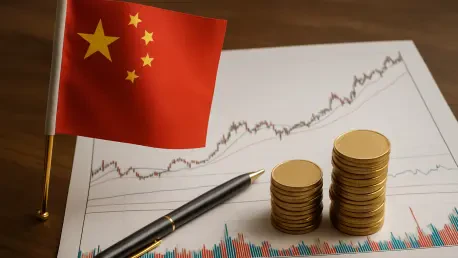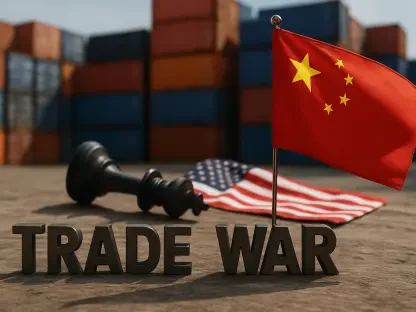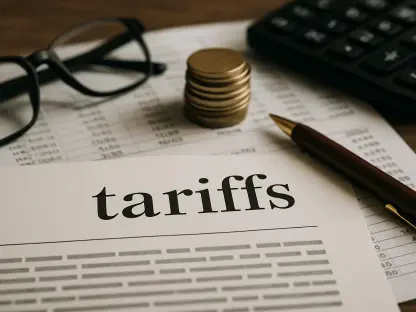Recent geopolitical tensions and regulatory uncertainties have culminated in an intriguing landscape for those considering Chinese equities as an investment focus. The dynamics of global trade, coupled with policy adjustments within China, are crafting a set of conditions that present significant opportunities for investors willing to navigate this space carefully. Particularly, the Hong Kong market has emerged as a focal point for foreign investors eyeing favorable returns in this evolving environment.
Global Trade Dynamics
Evolving U.S.-China Relations
The signing of the Geneva agreement earlier this year marked a significant turning point, indicating a shift from years of strained relations between the U.S. and China. By reducing reciprocal tariffs to 10%, this understanding has laid the groundwork for reinstating more normalized trading activities. Moreover, China’s decision to resume rare earth exports, in exchange for relaxed restrictions on U.S. semiconductor exports, illustrates a mutual recognition of economic interdependency. However, despite this newfound cooperation, lingering threats of tariffs remain, posing potential challenges. Yet for now, these developments afford Chinese exporters a valuable period to regain stability and reassess their strategies amidst ongoing uncertainties.
The transformation in Sino-U.S. relations is underscored by the broader implications for global trade flows. By reestablishing vital trade channels, the agreement opens the door for enhanced Chinese exporter participation in international markets. This potential boosts confidence in key sectors influenced by trade dynamics, particularly technology and manufacturing. Consequently, for investors, understanding these trade movements can yield substantial insights into identifying investment targets that are both poised for growth and shielded against future disruptions. As these relationships continue to evolve, it is crucial to remain vigilant to shifts that might redefine trade practices on a global scale.
Diversifying Trade Relationships
In response to sustained Western pressures, China has expanded its trade strategy by seeking deeper alliances with BRICS nations and Southeast Asia. This approach not only diversifies its trade portfolios but also opens pathways to emerging high-growth regions and markets. By reinforcing its networks outside traditional Western economies, China is strategically positioning its economy to be less reliant on any single trading partner. For investors, these developments offer a lens to examine sectors that are likely to flourish as China taps into these alternative trade routes.
The focus on diversification highlights a broader trend of economic decoupling, where nations look to secure supply chains and reduce risk exposure. For China, expanding ties with regions like Southeast Asia means access to rapidly growing markets and innovative technological exchanges. This engagement is expected to add layers of resilience to its domestic industries, further expanding the scope of potential investment opportunities in key sectors like renewable energy, infrastructure, and consumer goods. Investors who keep an eye on how these trade strategies unfold may be able to identify the sectors that stand to gain in the long term.
Policy Adjustments
Fiscal and Monetary Policies
The Chinese government’s commitment to stabilizing economic growth is reflected through robust fiscal and monetary policy measures. This year, a substantial fiscal package aims at alleviating crucial public service deficits and stimulating overall economic stability. By adopting such proactive policies, the Chinese authorities send a decisive message of intent, underscoring their focus on sustaining growth momentum. Measures like special treasury bonds are targeted to facilitate essential infrastructure projects, thus creating ripple effects across various sectors of the economy.
Monetary policy shifts emphasize the People’s Bank of China’s endeavor to inject liquidity into the market. By transitioning to a “moderately loose” stance, the central bank has taken steps like rate cuts and reducing reserve requirements, fostering a credit-friendly environment. Such actions have paved the way for a revitalization in sectors like real estate, where targeted interventions assist homeowners with cheaper mortgage rates and align local government incentives with housing sector support. For investors, this dual focus on fiscal and monetary reforms serves as a vital indicator of the investments likely to benefit from state-backed measures, offering both short-term gains and long-term growth.
Sector-Specific Interventions
In targeting specific economic sectors, the Chinese government showcases its tactical approach in stabilizing and revitalizing growth engines that have been underperforming. Within the real estate landscape, interventions such as mortgage rate cuts and government-backed housing finance provide the necessary lifeline to rejuvenate this lagging sector. Such measures are crucial because they enable a more steady demand and supply balance, ultimately fostering wider economic stability. Beyond real estate, emphasis is also being placed on emerging sectors like electric vehicles (EVs), as the state emerges as a key player supporting innovation and expansion in this domain.
For investors, this sector-specific focus presents both risks and opportunities. The distinction between state-supported and purely market-driven sectors helps in identifying where potential upsides might be substantial due to government support. Evaluating investment avenues based on these interventions requires increasing proficiency in understanding how policy objectives align with broader economic strategies. By grasping the interplay between policy actions and sector outcomes, investors can reasonably pinpoint areas with burgeoning profitability and ongoing state interest.
Valuation and Sector Rotation
Valuation Metrics
Current valuation metrics suggest a particularly alluring landscape for those willing to explore Chinese equities. As of this year, the Chinese Index presents a distinguishable discount with its P/E ratio at 11x, setting an appealing contrast to many global counterparts. This notable gap, particularly in comparison to U.S. benchmarks, indicates possible undervaluation, inviting deeper analysis by discerning investors. Such discount levels, though attractive, must be examined alongside market conditions, as short-term overvaluation concerns hover over certain areas, such as the Hong Kong Stock Market, which trades within its 5-year average.
The sectoral divide in valuations highlights certain promising areas, notably in electric vehicles and semiconductors—sectors considered crucial to the future of global supply chains. These sectors’ undervaluation positions them as strategic investment outposts, offering investors a chance to engage with developments central to global technological advancements. By concentrating on value-driven opportunities, investors can identify areas where market misalignments work to their advantage, offering robust returns in a market otherwise characterized by volatility and uncertainty.
Strategic Allocation Approaches
Sector rotation and strategic allocation strategies form a cornerstone of successful navigation within the complex matrix of Chinese equities. As emerging areas such as energy, technology, and rare earths gain prominence, investors are encouraged to evaluate the structural changes shaping these sectors. With global movements toward decarbonization, the energy and electric vehicle sectors present unique avenues for growth. Companies like China Minmetals and CATL, with their pivotal roles in supplying rare earths and EV batteries, exemplify firms poised for gains, reflecting broader trends supporting the green transition.
This strategic focus demands a nuanced understanding of both domestic and international pressures impacting these markets. Despite existing challenges from U.S. export controls, the technology sector maintains growth potential through domestic demand strength and strategic alliances beyond American interests. As investment strategies evolve, discerning sector rotations can reveal paths once obscured by geopolitical noise, presenting informed investors with trends and trajectories aligning with larger economic narratives.
Optimism in Uncertainty
Long-term Prospects
For global investors, the current convergence of low valuations, policy clarity, and burgeoning trade relations forms a compelling case for engagement with Chinese equities. While ongoing geopolitical issues will undoubtedly contribute to market fluctuations, they are overshadowed by the multitude of opportunities present within a landscape marked by evolutionary economic processes. The potential for significant growth remains anchored in investors’ ability to acknowledge and adapt to these transformative changes.
In examining long-term prospects, the success of investments rests upon strategic judgments, guided by understanding macroeconomic developments and interlinked global movements. Those looking to capitalize on undervalued sectors will find this market transition as ripe with potential, as driven by goals aligning ecosystem changes with broader industry trends. Recognizing opportunities amidst volatility demands agility and foresight, qualities rewarding investors attuned to shifts shaping the world’s second-largest economy.
Strategic Considerations
The recent geopolitical tensions and the ongoing regulatory uncertainties are shaping a daring yet intriguing landscape for those interested in investing in Chinese equities. This complex scenario is underscored by the ever-evolving dynamics of global trade, which create a unique set of conditions worth exploring for potential investors. The internal policy shifts within China further enhance the investment climate, creating both challenges and opportunities. For those willing to carefully navigate this nuanced terrain, there are significant potential gains to be made. Specifically, the Hong Kong market has surfaced as a key area of interest for foreign investors seeking attractive returns amid these evolving conditions. Hong Kong serves as a strategic gateway to the broader Chinese market, providing access to opportunities that are unique to this particular economic and regulatory environment. As the global landscape continues to evolve, staying informed and strategically positioning oneself could lead to impressive returns for astute investors.









